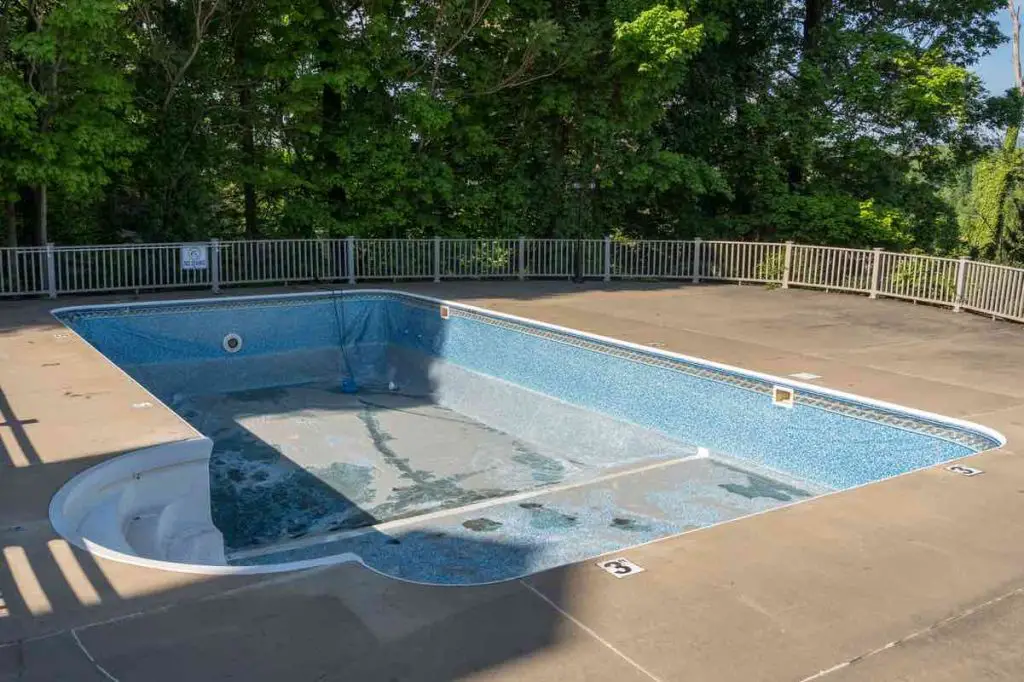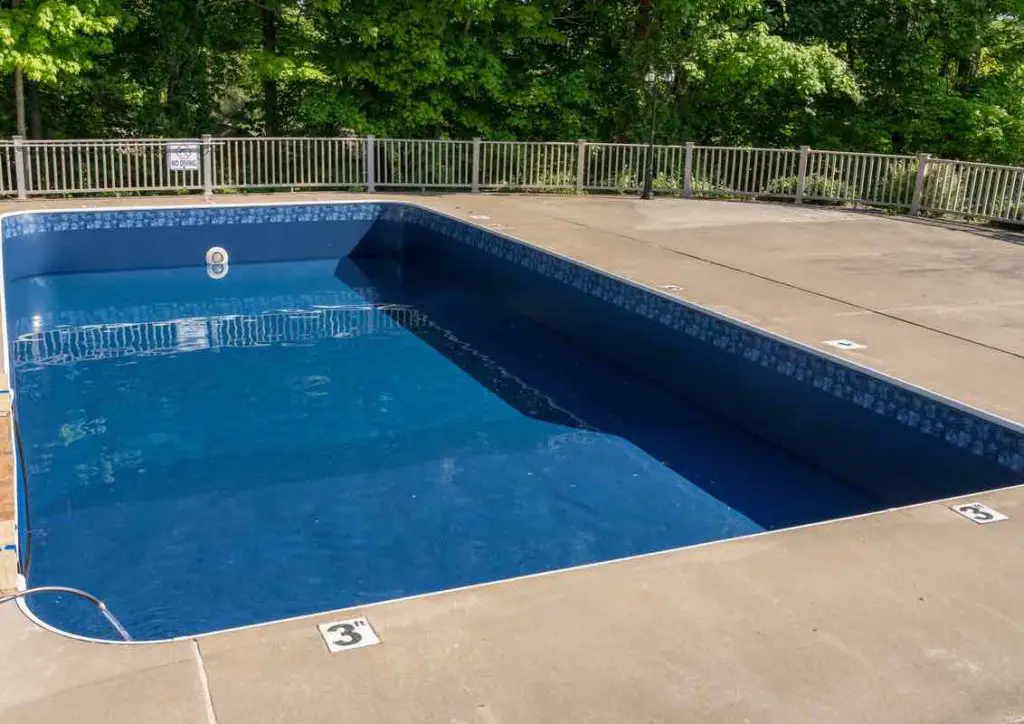Vinyl liners are some of the most popular swimming pools worldwide. They’re affordable, easy to maintain, and customizable. However, vinyl is susceptible to shrinking and stretching. Failure to take care of a vinyl liner will cause all sorts of problems, but will your liner shrink if you neglect it?
Vinyl liners shrink over time from excessive chemical exposure and dryness. These liners aren’t supposed to be exposed to direct sunlight for too long without water in the pool. Using harsh chemicals will expand and contract the material, causing weak points. These spots lead to tears and cracks.
Throughout this article, we’ll explain whether or not a new vinyl liner shrinks, what causes the shrinkage, and how you can stretch your liner back into place.

Will a New Vinyl Pool Liner Shrink?
New vinyl liners are elastic and easy to install. Many pool installers expect the liner to stretch, but it’s also possible for the vinyl to shrink. However, vinyl shrinkage is usually a problem. You shouldn’t plan for the liner to shrink under the correct installation techniques. Flipping the liner inside out can cause this problem, though.
According to Paradise Pools MS, many experts recommend replacing the liner if it shrinks too much. Unfortunately, it’s possible for a new liner to shrink right away. Make sure you choose a reputable pool installation company to prevent this from happening.
Before you replace your shrunk vinyl liner, it’s essential to know what causes the problem. A shrunk liner usually comes out of its tracks. Let’s dive into the various explanations of why this happens to some vinyl swimming pools below.
What Causes Vinyl Pool Liners to Shrink?
Dryness, harsh chemicals, and natural wear and tear cause vinyl pool liners to shrink. Liner World claims improper installation techniques can cause the liner to shrink and shift. The final common cause of vinyl pool shrinkage is minor tears in the liner. All of these issues will eventually cause the liner to come out of its tracks.
Here’s an in-depth explanation of each of these probable causes:
- Excessive dryness shrinks the vinyl when it’s under direct sunlight without enough water. The vinyl liner needs to stay saturated. It’s important not to let the pool stay empty for longer than a couple of days. Check the water level and fill the swimming pool if it ever gets below the skimmer gate.
- Harsh chemicals damage the liner. That’s because vinyl can’t withstand high concentrations of calcium in the form of calcium hypochlorite. Strong powder pool shock, liquid muriatic acid, and many other pool chemicals are too strong for vinyl liners. Unfortunately, many pool stores recommend them because they work quickly. [Do You Need to Use Calcium for Vinyl Pool Liners?]
- Natural wear and tear shifts all vinyl liners, causing them to shrink. Jumping in the pool, bouncing on the ladder, or landing too hard on the vinyl will make it shift and compress. You can avoid some of these issues, but almost all vinyl liners eventually move around and have stretching or shrinking problems.
- Improper installation can cause the liner to stretch in one direction and shrink in the other. If the installation company pulls it too far over the track to one side, the other side will slowly fall out of the track. This makes it look like the liner is shrinking.
- Small tears will shrink the liner. This process works much like snapping a rubber band. The vinyl stretches until it breaks, then both sides of the tear shrink inward. Patching the small vinyl cracks will prevent this from happening.
How to Stretch a Liner and Put It Back On Its Track
To stretch a liner and put it back on its track, follow these steps:
- Drain the swimming pool. It’s almost impossible to stretch a shrunk vinyl liner if it’s filled with water. Water weighs eight pounds per gallon, so a 10,000-gallon pool is incredibly heavy. Drain the water with a submersible pump to make it significantly easier to stretch and pull.
- Heat the vinyl to make it stretchy. You should stretch the vinyl liner when the sun is directly over the empty pool. The sun’s heat is often enough to warm and loosen the vinyl. You can also use a blow dryer. Make sure you hold the dryer about 12 to 18 inches away from the vinyl to prevent permanent damage.
- Stretch the liner by hand or with a clean plunger. Removing the liner from its track will let you get a firm grip. You can pull it with textured gloves or a plunger. Suction the plunger to the edge of the vinyl and gently pull it outwards. It’s crucial that you work slowly to prevent unwanted tears and weak points.
- Hook the liner into the track. Regardless of which kind of liner track you have, it needs to be secured. Hold the stretched liner with one hand and hook it in its track with the other. Perform this process around the entire swimming pool to ensure one side doesn’t put pressure or tension on the other.
- Remove all of the wrinkles from the liner. You can use the previously mentioned plunger trick to remove every wrinkle from the vinyl. It’s inevitable that you’ll encounter a few small wrinkles when stretching a vinyl liner. Fortunately, it only takes a couple of minutes to remove each wrinkle.
When you’re done stretching the liner, it’s time to fill the pool. Since leaving water out of the pool causes it to shrink, we suggest filling it right when you’re done with this process. Make sure you add the necessary chemicals after testing the water. Use gentle chemicals rather than harsh, concentrated solutions.

Final Thoughts
Now that you know what causes vinyl liners to shrink, you can do your best to prevent it from happening. A little bit of shrinking and stretching is expected with any vinyl liner. Keep in mind that installing staircases, ladders, and other devices will affect the liner. Don’t let the liner sit without water for too long.
